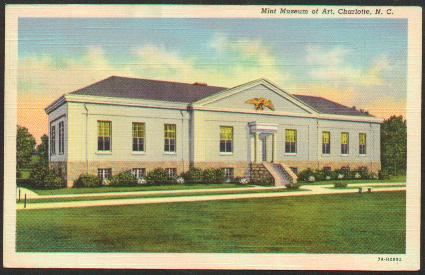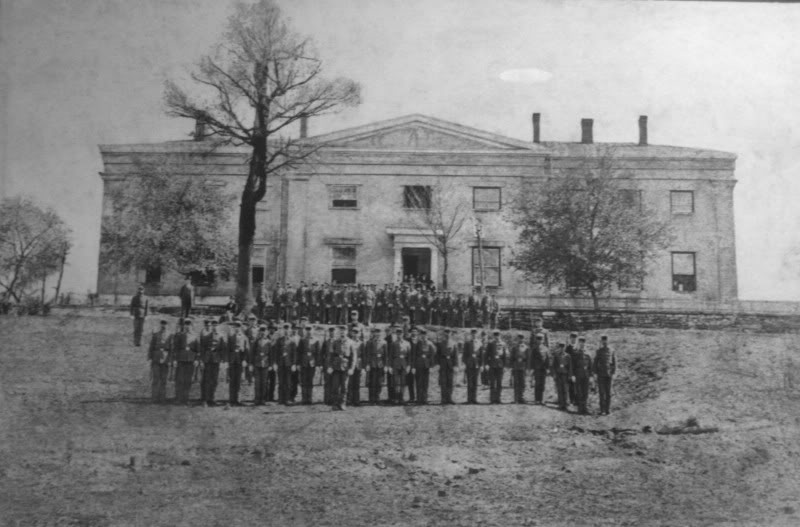Branch Mints
Gold coins have been produced at many mints in the US (Carson City, Charlotte, Dahlonega, Denver, Philadelphia, New Orleans, and San Francisco), however, in the world of coin collection, the sites that have minted coins from local ore are just a few. Most of these “branch mints” were created, and used to mine the mineral deposits that were prevalent in the area. Another fun fact the first big “strike” of gold in the US was not in California, but in North Carolina.
In the lower Piedmont area of the state, Conrad Reed found a 17lbs rock of gold in 1799. South of Charlotte another rush began in northern Georgia around 1829, in the area that was once part of the Cherokee nation. The volume of gold was so great that a new town named Dahlonega (Cherokee for “yellow” or “gold”) was established.
By the 1830’s enough gold had been discovered that The US Congress created, and President Andrew Jackson signed, the Mint Act of 1835, a law that created three mints in Charlotte, North Carolina, Dahlonega, Georgia, and New Orleans, Louisiana. It was not until January 1848 that John Marshall discovered gold in Coloma, California and the California Gold rush begin.
Charlotte (1838-1861)
The first branch mint began construction in 1836, and it officially opened on July 27, 1837, and had the mint mark of C. From its opening day until March 27, 1838, only raw gold was processed and refined. On March 28, the first coins were struck, a $5 (half eagle). As time went on $2.50 (quarter eagles) were also struck. In 1845 a large part of the original building burned down, thus limited the amount of coins that could be created. However, production continued, and in 1849 small dollar coins began to be produced.
However, the mint did not live in isolation, and in 1861 the Civil War came to the mint with the seizure of the mint by the Confederate army. The buildings were used as a hospital and headquarters. In total over $5 million in coins were produced by the Charlotte mint, so they are considered to be scarce to extremely rare. They have a slightly. They were not as good quality as Philadelphia the (pardon the pun) gold standard of coin production in the US. The gold in these coins tends to be yellow-gold or green-gold in tone.
The original building was moved from its original location and is now a mint museum that has a decent collection of local coins.
Dahlonega (1838-1861)
The next main branch mint was established Dahlonega, Georgia (mint mark D) in 1838. The land was purchased in August 1835, and the mint was opened in February 1838, and the first coins were minted on April 17, 1838. This mint only produced locally mined ore gold coins.
Dahlonega produced coins in the denomination of $1.00, $2.50 (quarter eagle), and $5.00 (half eagle). In 1854 the mint also produced $3.00 dollar coins. Their output was relatively small ($6 million in coins) and are famous for their weak strikes. Due to the small volume of coins, the coins are considered rare. These coins tend to have a pink tone to them.
This mint was also seized by the Confederate army in 1861, and in 1878 the building was destroyed by fire. Currently atop is location is Prince Memorial Hall of North Georgia College & State University.
Note: Although Denver also uses the D mint mark, the mints never operated during the same period, so the date will tell you which mint mark of D refers to.
New Orleans (1838-1861 // 1879-1909)
The last of the three established branch mints was in New Orleans (mint mark O). It produced coins from 1838-1861 and 1879-1909. The mint opened on March 8, and the first coins, which were silver, were struck on May 7, 1838.
None of the gold coins produced at this mint was for local sources. The location was chosen due to the expanse of the port in the city. Coins were created from gold deposits in Alabama, Georgia, Tennessee, and Carolinas, as well as converting foreign coins into US coins. During its first minting operations, it produced of $1.00, $2.50 (quarter eagle), $3.00, $5.00 (half eagle), $10.00 (eagle), and $20.00 (double eagles). In 1861 is was seized by the Confederates, and was recaptured by the Union in 1862. The coins made in New Orleans are considered rare to common, and good quality coins, but are known for their soft strikes. But 1861 had made over $41 million dollars of coins. In its second life, the mint produced $5 half eagles, $10 eagles and, in 1879 only, 2,325 $20.00 double eagle.




